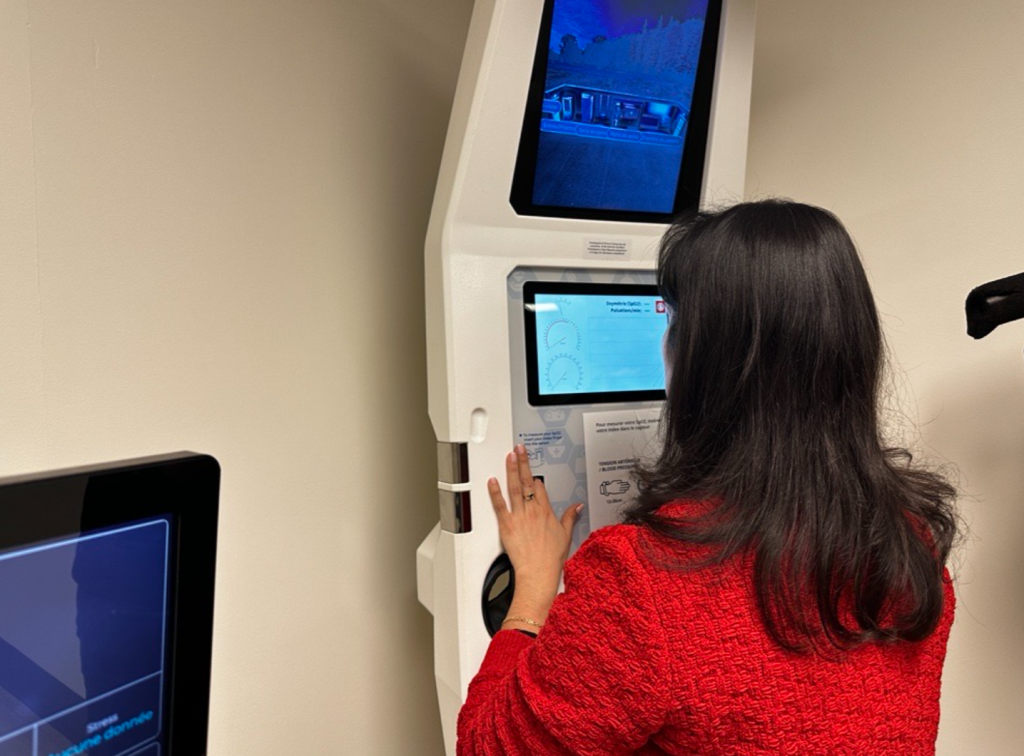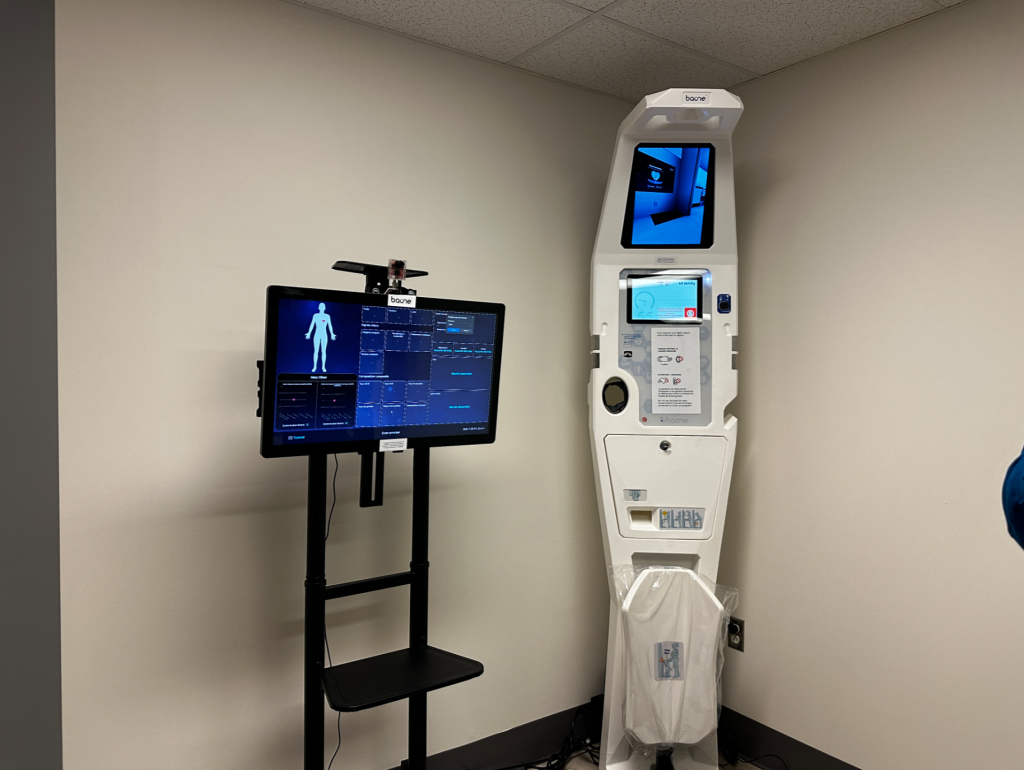Canada’s first telehealth station unveiled in Montreal’s West Island
Posted November 25, 2024 2:54 pm.
Last Updated November 25, 2024 7:13 pm.
A first in Canada, a telehealth station that allows patients and astronauts to monitor and measure their blood pressure, pulse, and blood oxygen levels was unveiled at the CLSC in Pierrefonds on Montreal’s West Island.
A pilot project, created in partnership with the Canadian Space Agency and Baüne, a Quebec-Alberta software company, has the potential of helping reduce time and stress for Canadians struggling to access a family doctor.
The regional health authority for Western Montreal – said they are hoping it’s a potential lifeline for the 38 per cent of Montrealers without a family doctor, as it can help them monitor their own health and even get appointments with a healthcare professional in critical cases.
“Think about not only the people from the city that do not have family doctors, but also all the people across Canada,” said Baüne Chief of Operations Andrea Galindo.

“It took us what, five, 10 minutes to do a full assessment?” she said.
Galindo says patients approach the machine with a wristband device where the machine then uses AI to create a digital footprint of the patients results, which will be stored and helped by a nurse practitioner.
“The Canadian Space Agency inspired the creation of this project by encouraging the development of technologies to monitor astronauts’ health remotely. Thanks to Baüne’s innovative software solutions, this state-of-the-art technology is now available to benefit the users of CIUSS Montreal West-Island,” reads a press release.
Astronaut David Saint-Jacques said the pilot project will take all existing data from numerous patients and apply the concepts to develop and improve astronauts’ health while in deep space.

“When you plan space missions, there’s many things that can go wrong, propulsion, guidance, navigation, and one thing that can go wrong is the astronauts can get sick,” he said.
“You can’t come back in an emergency, the moon takes many days to come back.”
He adds that this innovation allows patients to rapidly go through a routine checkup, where the core concepts from this machine will be applied to monitor astronauts during space travel.
Throughout Canada, it’s estimated that six million Canadians don’t have access to a family doctor.
How does the Baüne Autonomous Care Unit work?

Patients will walk into a small room wearing a smart device (a Baüne Smart wearable device) and the platform can check up to 40 different health indicators within minutes.
It can also review a patient’s vital signs and symptoms, including mental health behaviors.
The telehealth station will then connect patients with a virtual doctor if any serious medical problems arise.
The data is then stored on a private health record, and this tool can be positively used for patients with chronic diseases who require regular monitoring.
“This is a revolution in healthcare and space”
Galinda said the connection for both patients and astronaut focuses on the accessibility of having data wherever you are, whether in space or a remote community in Canada.
“Mars is many, many months, so the crew will need to be much more autonomous in their healthcare,” Saint-Jacques said. “We’ll need to be able to automatically monitor their healthcare to see any trends, this is a revolution in healthcare and space.”
Galinda said they will be able to see an improvement or decline on a patient’s health with real, tangible health data that is connected to a clinical setting.
“Accessibility of healthcare regardless of where you are, accessibility to your health data and accessibility to the next time that you go to the doctor, to a specialist, they can know, hey, what’s going on with my health data over the last 10 days, 5 months, a year,” she said.

“The Baüne Autonomous Care Unit integrates a human-centric technology platform called Nüpa, designed by Baüne. The platform seamlessly integrates multiple medical devices and systems that allow for efficient health evaluations,” noted the press release.
With advancements in space travel, Saint-Jacques said all data is vital, which will help future missions to the moon and mars as the machine calculates a Risk score on behavioral and mental health of the patient.
Galinda adds that with advancements in AI, improvements can happen daily and expects more patients will utilize this device in the future.
“There will be multiple procedures that need to be taken into consideration, but we see a huge potential for a number of people coming in.”








